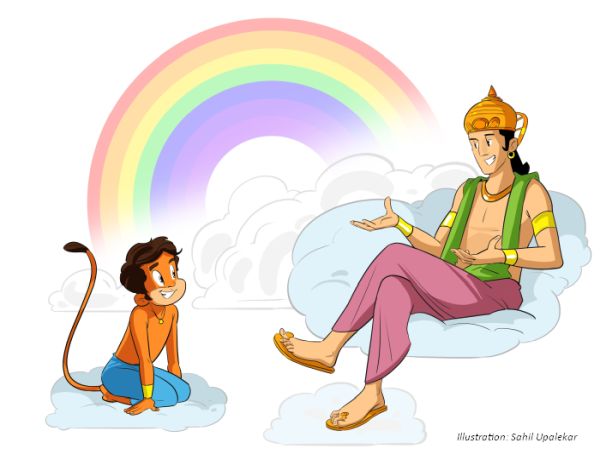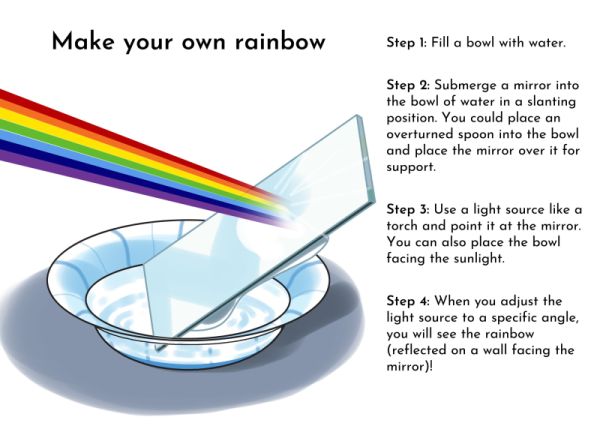The artist in the sky
- POSTED ON: 24 Feb, 2023
- TOTAL VIEWS: 194 Views
- POSTED BY: Jagadeesh Kanna | Article: Madhumitha Srinivasan
Every time Indra comes to visit Vali, he always teaches him some magical science experiments. During one such visit…
Vali: Dad, what are you going to teach me today?
Indra: Tell me what you like, and I will teach you something related to that.
Vali: I love Nature: the blue sky, the rain and rainbows, the colours of the early morning and evening sky … whoever created it must be a good artist.

Indra: Not only an artist but a scientist too.
Vali: Are these two related: the colours in Nature and science?
Indra: Yes! Everything you said you liked about Nature — the lights and colours — has something to do with science.
Vali: Can you explain it to me?
Indira: I can show it to you! Get me a mirror, a bowl of water and a torch or any light source.

Vali: Wow! We created an artificial rainbow!!
Indra: This phenomenon is the “scattering of light”. This means that light scatters when it is allowed to pass through a substance: gases, liquids, or solids.
Vali: Is this what causes the colours I love?
Indra: Yes. This is what makes the sky appear blue, and red during sunrise and sunset. This phenomenon is named the Raman Effect after the scientist who discovered it? Sir C.V. Raman was a physicist and the first Indian to win a Nobel prize in 1930 for the discovery of the science behind these various natural phenomena.
Vali: That’s amazing! But, Dad, isn’t this something that occurs naturally? What is there to discover?
Indira: Even though it occurs naturally, no one could explain how it took place. Raman also mastered the art of light scattering by making any white light source get scattered into a specific colour based on the material it passes through or gets deflected from. The less deflected or stronger light waves are red, and the highly scattered ones are violet.
Vali: Since the smallest wavelengths scatter more easily and these are in the blue spectrum, the sky and sea appear blue, right?
Indira: Exactly! Using this idea, one can find how each material reflects light. So it has various uses in the petrochemical and pharmaceutical industries, healthcare, art and archaeology, space exploration, and more…
Vali: Oh! No wonder he deservedf the Nobel Prize.
Indira: It is in his honour that people in India celebrate National Science Day on February 28, to mark the discovery of the Raman Effect.
Vali looks admiringly at the hues of the beautiful morning sky.
The author is the founder and CEO of Vaayusastra Aerospace, an IIT-Madras incubated ed-tech startup that offers Air Science workshops for children between five and 14 years.